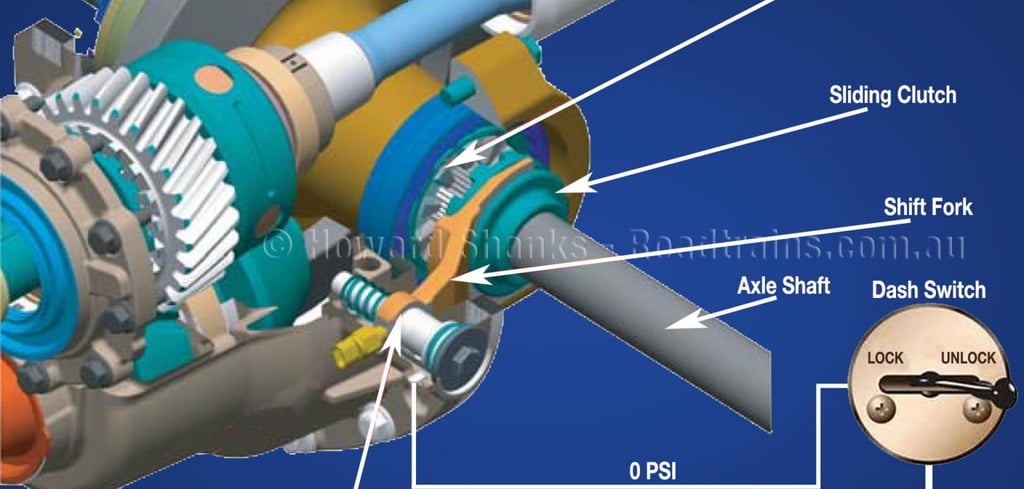How Inter Axle and Differential Locks work in a Truck
2/8/20252 min read


Introduction to Truck Locking Mechanisms
Trucks are essential for transporting goods across various terrains, and their performance largely relies on the functionality of their locking systems. Among these systems, inter axle locks and differential locks play a pivotal role in enhancing traction and stability in challenging driving conditions. Understanding how these mechanisms operate can help truck operators make informed decisions about when and how to use them effectively.
How Inter Axle Locks Function
Inter axle locks are designed to improve traction by locking the two axles together as a single unit. This mechanism is particularly useful when traversing slippery or uneven surfaces where one axle may spin faster than the other. By engaging the inter axle lock, the driver can ensure that both axles receive equal power from the transmission. This reduced wheel slip enables the truck to maintain better control and stability, greatly assisting in off-road conditions.
The Role of Differential Locks
Differential locks, on the other hand, primarily regulate the wheels on the same axle. Under normal conditions, a differential allows the wheels to rotate at different speeds while cornering or navigating curvy paths. However, when one wheel starts to slip—common in muddy or rocky environments—a differential lock can be engaged. This locks both wheels on the axle together, providing maximum power to the wheel with the best traction. Although effective, differential locks should be used judiciously as they can inhibit effective turning and maneuvering capabilities on dry surfaces.
When to Use Inter Axle and Differential Locks
Ultimately, both inter axle locks and differential locks serve distinct but complementary purposes in enhancing a truck’s operation. Inter axle locks should be engaged when navigating particularly rough or slippery terrains, where maintaining balanced traction across both axles is crucial. Conversely, drivers should activate differential locks when they encounter one wheel that is losing traction, ensuring that the torque is evenly distributed to both wheels on the axle.
In summary, understanding the functionality of inter axle locks and differential locks can significantly impact a truck's performance. Utilizing these systems appropriately helps drivers optimize their vehicle's capabilities in varied conditions, ensuring that they traverse difficult terrains safely and efficiently. Proper education on these locking mechanisms is vital for truck operators aiming to enhance operational safety and performance.
Support
Ask questions and share truck repair tips.
Connect
© 2025. All rights reserved.
